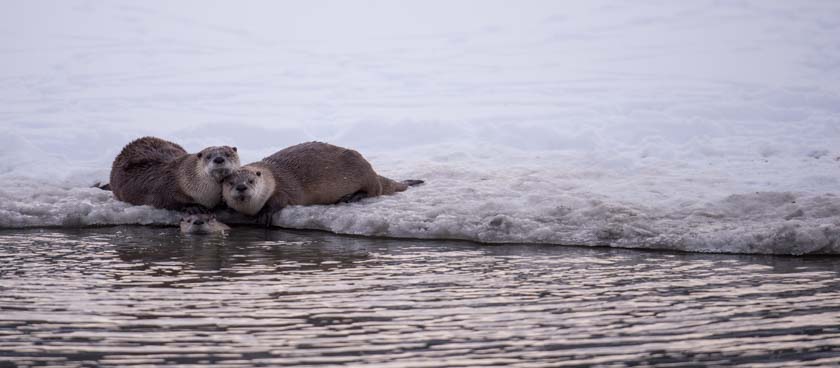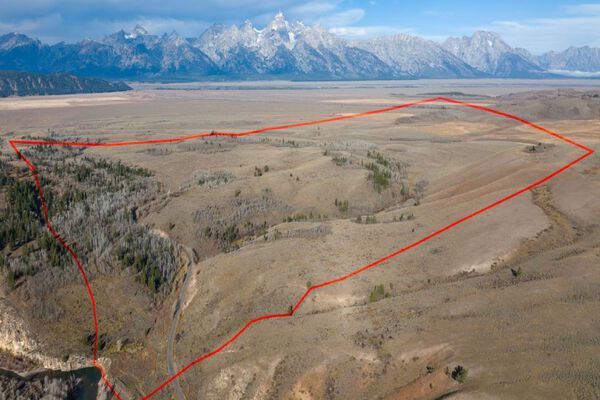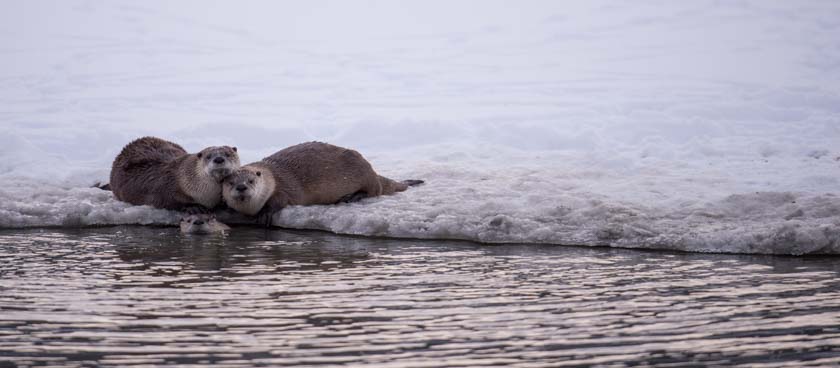
This winter has been an interesting one for wildlife. The upper Snake River and adjacent mountain watersheds are all recording snow water content levels well above 100%, yet valley snowfall has been one of the lowest on record. This is because unusually warm temperatures during many of our winter storms this year resulted in the plentiful snow at high elevations but rain falling at and near the valley floor. Shallow snow depths favor ungulates like elk, deer, moose, and bighorn sheep, because forage is easier to access and good footing provides an edge when trying to escape predators. Nevertheless, as we enter late winter/early spring, keep in mind that this is the toughest time of year for many species as their fat reserves run low prior to spring green up. Maintaining respectful distances and not allowing your actions to influence wildlife behavior are paramount.
• By late February, bull moose have dropped their antlers. To tell the difference between males and females, look for the antler attachment points, called pedicles, on the heads of males or the white fringed area around the tail of females.
• It’s nearing the end of the wolf breeding season. Similar to dogs, the gestation period for wolves is 63 days. Females will whelp pups in mid-to-late April, but the pups will not emerge from dens until May.
• Long-tailed weasels are crust cruising and leaving behind tell-tale signs of their activities — dumbbell shaped tracks zig-zagging across the snow’s surface and small holes that plunge to the subnivean (below snow) environment where they find prey.
• Sage grouse, which are year-round residents that survive the winter by foraging on sagebrush leaves exposed above the snow, will begin their courtship at lek sites in late March and early April.
• Mule deer that summer in the northern portions of Grand Teton are on their winter ranges in the North and South Forks of the Shoshone River near Cody, around Dubois, Wyoming, in Idaho’s Teton Canyon, and near Farson, Wyoming to the south. Some animals, like mule deer, migrate long distances to avoid the harsh winter conditions encountered in Jackson Hole and to find more accessible foods where snow cover is reduced.
• During mid-winter, vegetation can be exposed on southern aspects where trees radiate warmth, causing the snow around the base of the tree to melt, and in avalanche paths when the snow slides to ground level. Resident mule deer will move from tree well to tree well and to avalanche areas to take advantage of the available browse.
• As days gradually lengthen, ravens, bald eagles, and great-horned owls — some of the area’s earliest nesters — begin courtship activities.
• Pronghorn are poorly adapted to deep snow and the typical extreme winter conditions of Jackson Hole. Most of the 300 or so animals that summer here migrate to the Green River drainage south and east of Jackson Hole to winter, where snow is not as deep.
• River otters are active near water bodies all winter using holes in the ice to move between land and water. Otters are well adapted to a life in and out of cold water with thick, protective fur that helps them keep warm. Because of their short legs, webbed feet, and sleek bodies they are strong swimmers.
• As the snowpack continues to grow in the mountains, it is looking like the valley will experience decent runoff, which should bode well for fish. Cutthroat trout typically spawn just after peak in runoff, with larger snow packs often resulting in later spawning runs and greater young of the year survivorship.
• Better than average trout recruitment usually translates into increased fisherman success a few years later as the year class reaches 3-4 years old and the fish grow more than 12 inches.
Please consider the space and energy conservation needs of wildlife during winter and do not approach them closely, even though they may appear unconcerned. In many cases, they simply have nowhere else to go until snow depths decrease.










